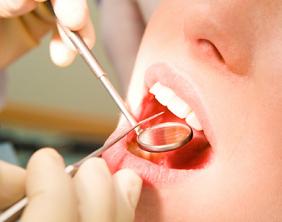Gum Disease Screening
Glenview, IL
 Gum disease screening is recommended twice annually. It is the best way to keep your gums healthy and immediately address early signs of gum disease before it becomes a serious dental issue. Put simply, periodontal screening is a crucial component of oral care. Failure to treat gum disease at the right time can aggravate the problem and lead to bone deterioration, tooth loss, and sometimes even life-altering illnesses. Schedule a gum disease screening today. Gum disease screening is recommended twice annually. It is the best way to keep your gums healthy and immediately address early signs of gum disease before it becomes a serious dental issue. Put simply, periodontal screening is a crucial component of oral care. Failure to treat gum disease at the right time can aggravate the problem and lead to bone deterioration, tooth loss, and sometimes even life-altering illnesses. Schedule a gum disease screening today.
Periodontal disease is predominantly an infectious pathology triggered by inflamed gums and the bone surrounding the teeth. The early stage of periodontal disease is called gingivitis which causes bleeding and swelling of the gums. Moreover, the swelling of the gums results in an uncomfortable feeling when drinking, eating, and brushing your teeth. Luckily, this stage of gum disease is easy to treat.
However, if left untreated, patients with gingivitis can enter the second stage of periodontal disease. It is better known as periodontitis. It can lead to irreversible damage to teeth and gums, resulting in tooth loss and severe health-related complications. In such a situation, gum grafting and periodontal surgery may be recommended.
Gum Disease Screening Procedure Explained
The gum disease screening procedure is often divided into three parts. These include:
Medical History/Initial Interview of the Patient
This is the first step of gum disease screening. The initial patient interview is designed to identify the risk factors for periodontal disease and health complications like hemorrhaging and scarring before the treatment is initiated. The dentist reviews the patient’s capacity for immune response and overall health before moving to the next stage of the screening and treatment process.
Oral Examination
Oral or clinical examination is the second step in diagnosing periodontal disease. At this stage, the dentist focuses on the intensity of the clinical signs. The dentist looks for prominent signs of infected or diseased gums, like sensitivity to touch, redness, and swelling. Other signs that the dentist may look for are cavities, tooth infections, and large or distorted pockets between gums. Bacteria can easily set in these pockets and cause infections. It further increases the risk of tooth decay.
Radiological Examination
The next step is detecting gum disease through radiological examinations such as x-rays. It is needed to detect the hidden symptoms of gum disease, like bone loss. With the help of these medical images, the dentist looks for:
| • |
Infections inside the teeth
|
| • |
Bone abnormalities that provide support to the gums
|
| • |
In aggressive periodontitis, the dentist may use probing to determine the pocket depth |
Gum Disease Treatments
After the proper screening, the dentist will classify the stage of periodontal disease. Root planing and dental scaling are the best ways to treat patients with gingivitis. Removal of plaque and tartar can reduce inflammation of gums immediately. However, a gum graft may be advised to treat periodontitis. The procedure uses donor gum tissue for gum line restoration.
For more information about gum disease screening or oral examination, please call us at 224-488-3392 to schedule a consultation at Glen Perio.
|